Posted by on
10/09/2025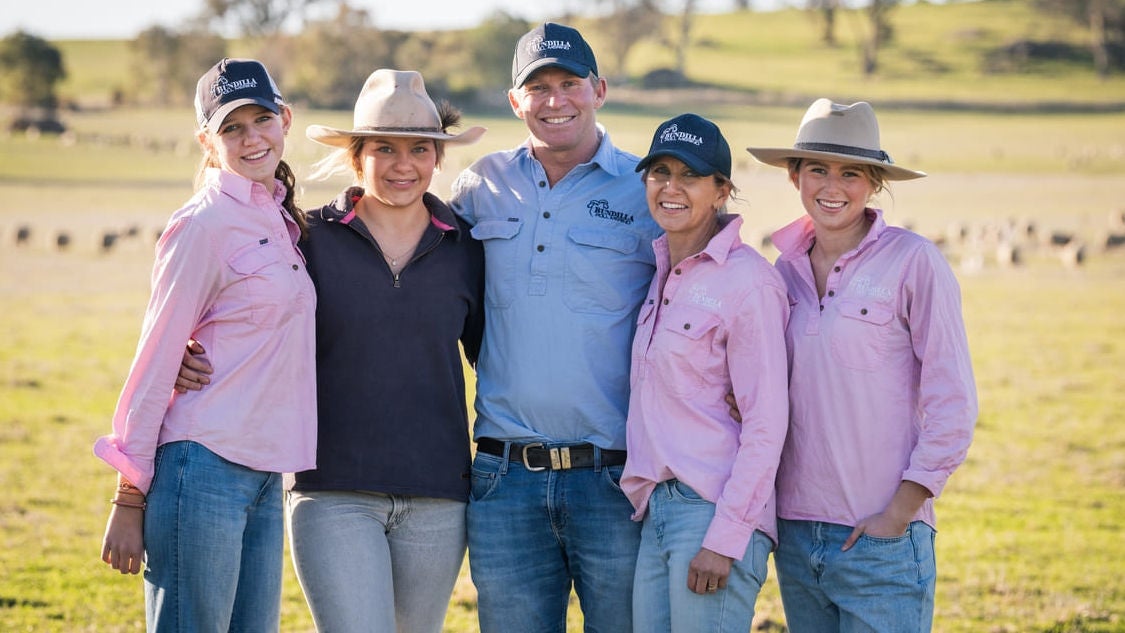
Mimi, Cleo, Rick, Jill and Lily Baldwin of Bundilla Poll Merino Stud.
While trends in the sheep and wool industry come and go, Rick and Jill Baldwin’s Bundilla Poll Merino Stud stands as a rare testament to commitment, and patience.
Today, their focus on data over a nearly 50-year pursuit to breed a modern, well-balanced, and highly fertile merino has culminated in one of Australia’s largest private genetic databases—and a legacy of leadership that continues to advance the industry.
Leading through data and genetics
Although breeding values guide most modern sheep operations, Rick’s parents, Ross and Susi Baldwin, were ahead of their time in recognising the power of data.
They established their merino breeding operation at Young, NSW, in the late 70’s with a focus on developing a large frame heavy cutting merino with the ability to wean twin lambs – a unique vision that lay the foundation for Bundilla Poll Merino Stud.
“Dad loved merinos, and he still enjoys being part of the operation,” Rick adds. “He had a keen eye identifying where things could be improved and while it’s been a long road our goals have not changed, for two generations, almost 50 years, we’ve been dedicated to breeding the best maternal merino in the industry.”
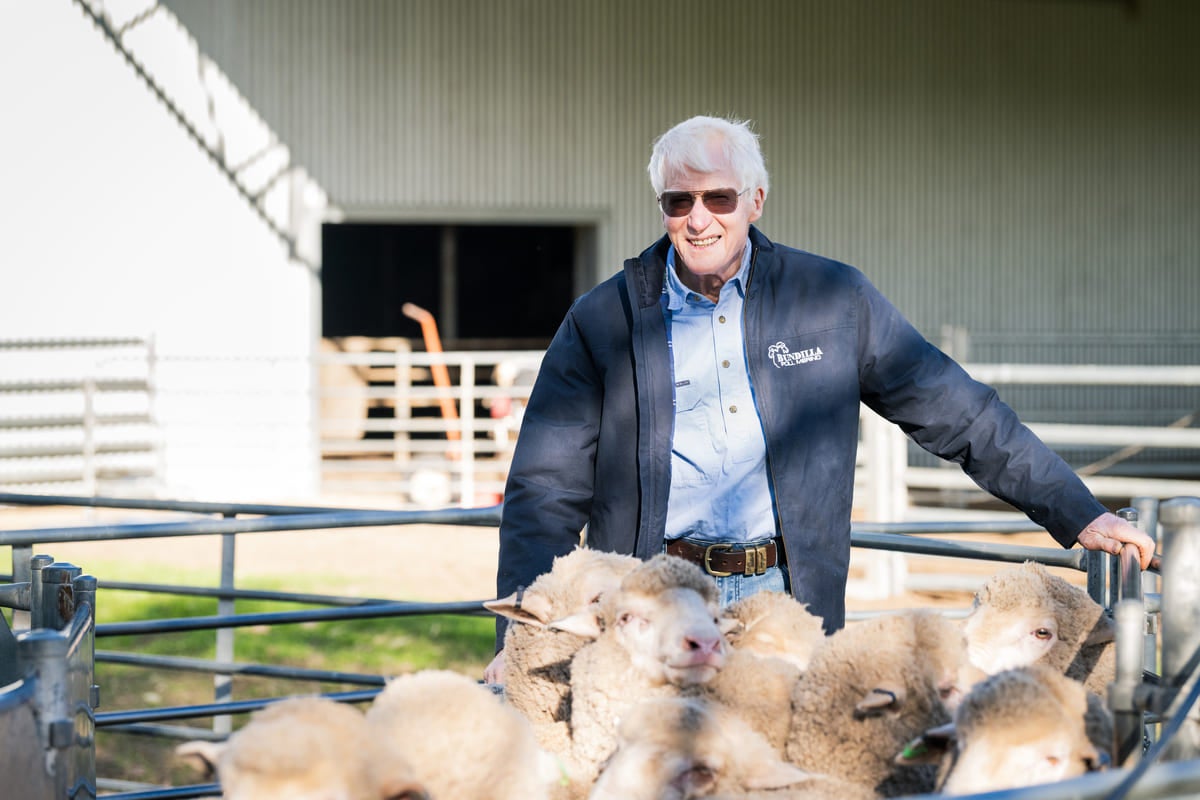
Ross Baldwin, an industry pioneer.
“The idea of a highly fertile merino sheep was a unique concept at that stage in the industry, and thanks to my parents’ foresight we now have a full pedigree dating back to the 1970s,” Rick explains. “It would be hard to find any stud with that depth of background data.”
This depth of data gives Rick and Jill the ability to identify family lines with superior maternal traits such as litter size, ewe raring ability and weaning rates, and multiply this through their stud and commercial flock.
“Our aim is to be as innovative as we can in breeding a dual purpose merino with a focus on ewe efficiency, which is a dam’s ability to maximise kilograms per hectare of lamb and fleece value per hectare of wool.”
“A well-balanced merino ensures producers don’t need to be reactive to market trends, rather, they can build strength into their business through a diversified and complementary enterprise.”
Rick and Jill took over the management of the business in 1996 and have grown the stud from 400 to 2,500 full pedigree stud ewes and a 3,000 head commercial ewe breeding program.
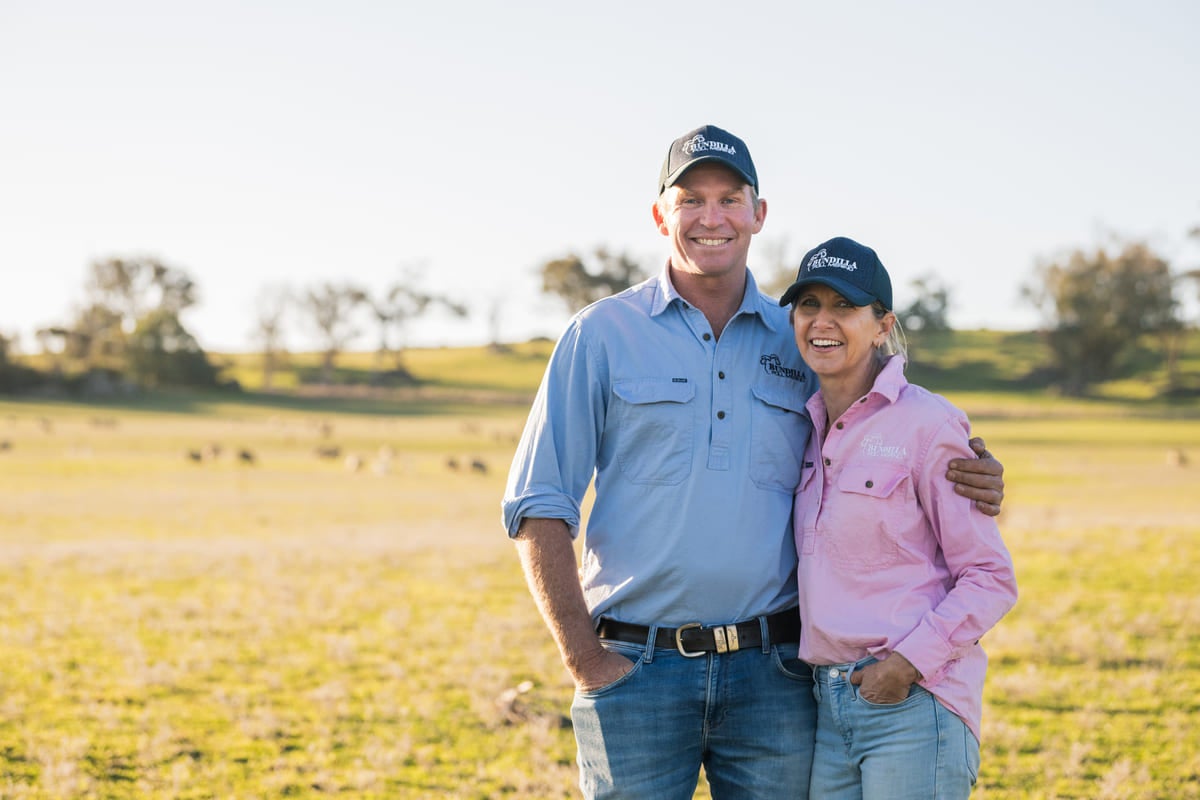
Rick and Jill Baldwin.
“We have a focus on weaning as many lambs as we can per hectare – maintaining a high weaning rate is one of our most important breeding values, then finishing the wether portion of our commercial flock at 10/11 months of age for a very profitable 11 months enjoying both fleece and carcase income.”
With Bundilla enjoying a weaning rate of between 140 to 145 percent, and clients achieving 120 to 140 percent weaning rate in their commercial flocks, the results are impressive, and as Rick explains, very financially rewarding.
“We get the greatest satisfaction seeing the results of our clients, we want them to be competitive and have the ability to wean, and wean well turning off lambs with weight.”
“One misconception in the industry is that higher fertility results in lower wool cuts, yet in our experience the higher the weaning rates, the more fleece value per hectare we’ve been able to achieve.
‘Balance is best at Bundilla’ is their business motto, Jill states, and while it’s easy to chase industry trends, she believes it’s financially smarter to focus on breeding animals with well-balanced traits across fertility, fleece, and carcase performance.
“Breeding for maternal traits, and building carcase and fleece value into our genetics has always been our priority, and our key to success is not straying from this path.”
In 2004 Rick and Jill introduced their poll breeding program, once again a step ahead of the industry.
“We could see the way the industry was moving, there was an increasing focus on proving performances, and having a polled sheep was more practical in terms of measuring growth and carcase weights, and ultimately gaining the data needed to performance measure.”
Progressing a strong merino future
Pioneers of merino industry data collection, the Baldwins couldn’t have imagined how their precision management would eventually be leveraged through the industry’s vast technological gains.
And while they’re well-placed to take advantage of such developments, Rick and Jill do not take their position lightly.
“There’s always new technology that will continue to take genetics forward, and we will continue to be innovative and improve,” Rick says.
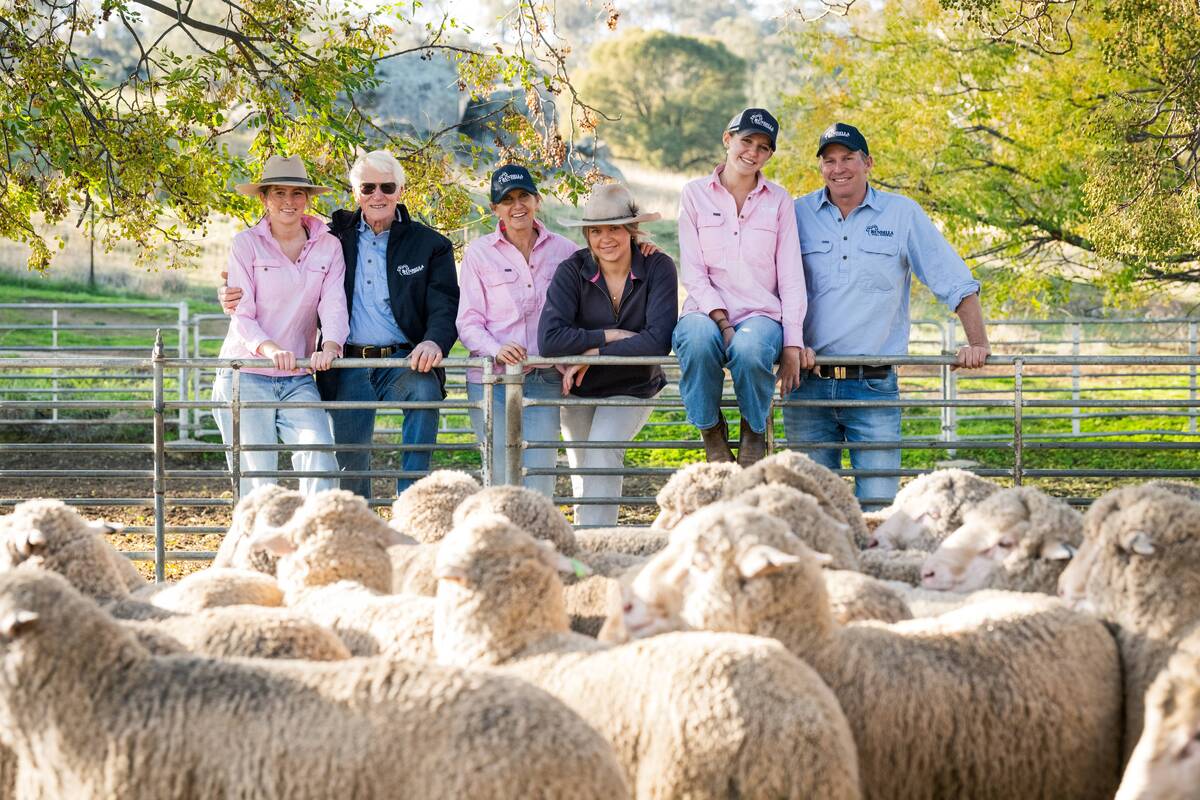
The Baldwin family look to a bright future.
With a data quality score of 95 and a five star rating, he believes accuracy of data is a factor many producers fail to consider, yet improving accuracy rates is another opportunity to build confidence and take the industry forward.
Merino wool also continues to hold enormous potential as a natural, sustainable fibre, particularly as consumers become more disconcerting, and from a business perspective, the wool clip is critical to the bottom line.
High fertility rates also allow the Baldwins an opportunity to sell surplus ewes, and this year they sold 3,000 ewes for additional cash flow.
“Our fertility rates enable us to turn over 90 percent of the flock every three years, which has a huge impact on cashflow.”
“While there’s a lot of noise regarding the sheep industry, if management is spot on there are so many opportunities to work smarter rather than harder, with very exciting returns to be made.”
With all sheep 100 per cent genomic tested, meat eating quality can be evaluated and costs can be saved through early classing.
“This is another example of data directly correlating with the bottom line, we can accurately identify and class our sheep early based on our breeding objectives, offload early and reduce costs.”
Selection of animals is balanced between breeding values and visual assessment, and nothing gives Rick and Jill more satisfaction than seeing breeding and visual alignment.
“When a sheep’s visual appearance is reflected in its breeding values it gives us huge confidence that it will breed to type. We take our visual assessments as seriously as our breeding values.”
This attention to detail culminates at the annual Bundilla Poll Merino Stud Ram Sale, held each October on farm. – this year being held on Wednesday, October 1.
“It’s great for clients to have the opportunity to see the yearly gains being made, and for us to show the passion we have for our breeding program,” Rick says.
“We try to visit our clients every couple of years, and nothing makes us happier than seeing the progress of their genetics on-farm – for us, that’s the most rewarding part of breeding.”
Rabobank support building a thriving business
Part of a thriving business is continually looking at the bottom line, and just as Rick and Jill are committed to improving their genetics, they’re also dedicated to making business gains that support profitability.
“Small tweaks add to the bigger picture, and we have a great relationship with our rural manager Georgia Twomey – she’s practical, knowledgeable and provides us with the feedback we need to continually take the business forward.”
Sharing their vision, and knowing Georgia is as equally committed to their business also provides great confidence.
“Knowing she has our back is reassuring, and I think tough years like this really demonstrate why it’s so important to have a manager, and bank, that understands your business – Georgia is not reactionary, she knows the capacity of our business throughout the seasons.”
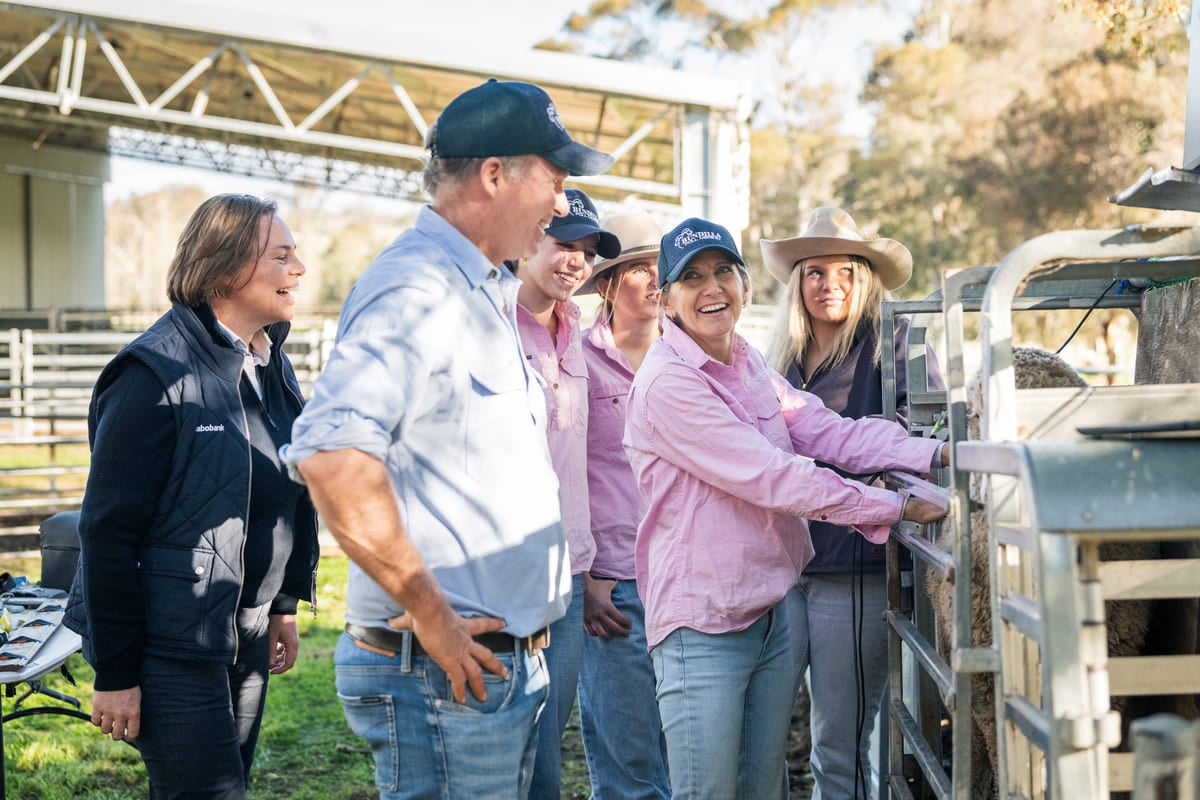
Rabobank’s Georgia Twomey enjoys nothing more than spending time on-farm with clients such as the Baldwins.
Rick and Jill are also impressed by the ease and simplicity of Rabobank’s All In One product.
“It’s really helpful to know where you’re at financially all on one screen, and to be able to manage interest rates and be aware of, and monitor your position – it makes cashflows and doing business so much more transparent.”
Working with a bank that specialises in agriculture affords them a unique perspective of where they sit in the larger ag picture, and while it can be humbling or exciting, Rick explains, it’s always helpful.
“Feedback is the only way we learn and improve, and I think one of my greatest learnings is never to get emotional over feedback – whether it’s a compliment or constructive criticism – my feelings never get hurt, it’s information that will help us improve.”
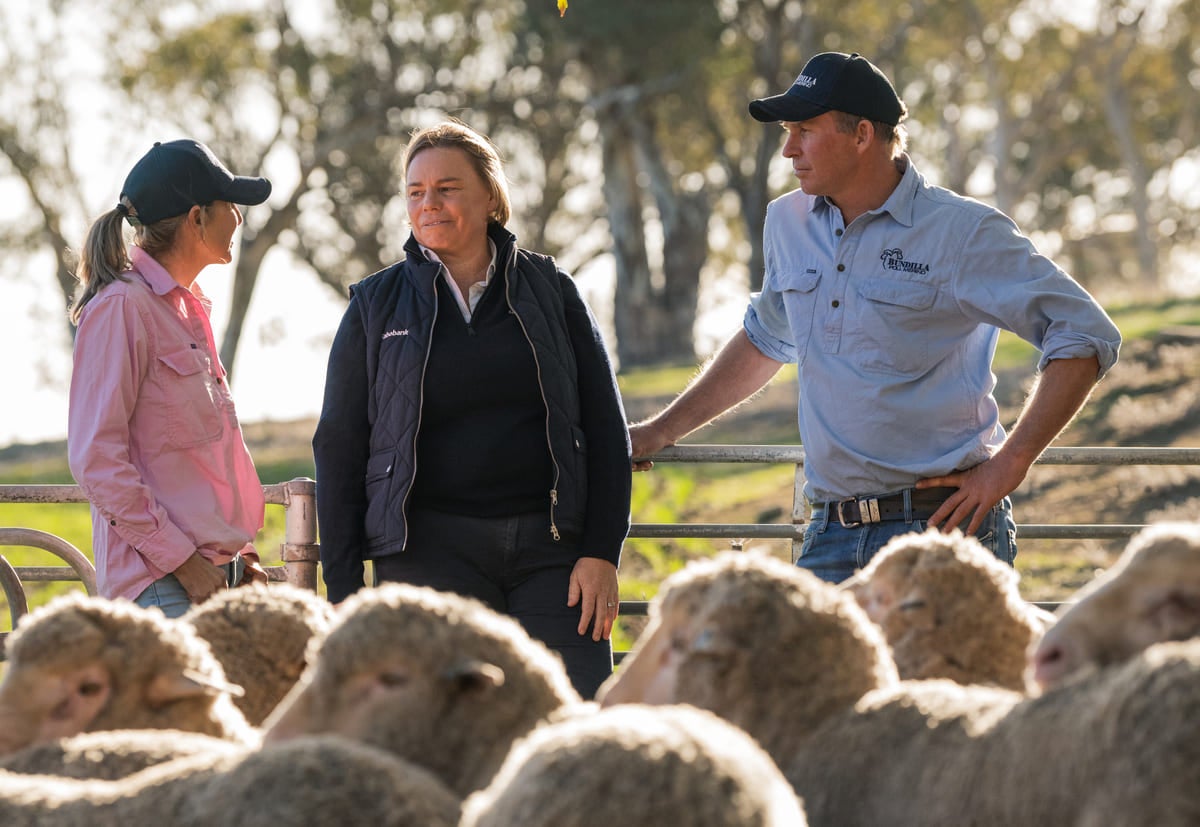
Rick, Jill and Georgia, centre, in the yards.
Reflecting the Baldwin’s thirst for diversity of knowledge, Rick admits they rarely turn down a Rabobank event invite, regardless of the commodity focus, or region.
“We’ve been to cropping events in Temora and Wagga, and we enjoy gaining a different agricultural perspective which we can perhaps incorporate into our own business – it’s always healthy to think outside the box and we don’t like to pigeonhole ourselves.”
“We really enjoy being open-minded to the industries that run alongside our own and what we can learn from them – providing this opportunity is something Rabobank does exceptionally well.”
Generous with their own learnings, the family are keen contributors to the industry and hosted a Rabobank sheep day, providing DNA test demonstrations and helping educate fellow sheep producers.
RaboResearch insights have also been instrumental in supporting decisions made on-farm.
“The RaboResearch reports keep us in touch with the wider market environment, and their forecasts make us think about what we’re doing, whether it’s our crop rotation, our breeding direction or a re-direction of focus on a certain genetic trait, we certainly pick out the information that we need to run our business well.”
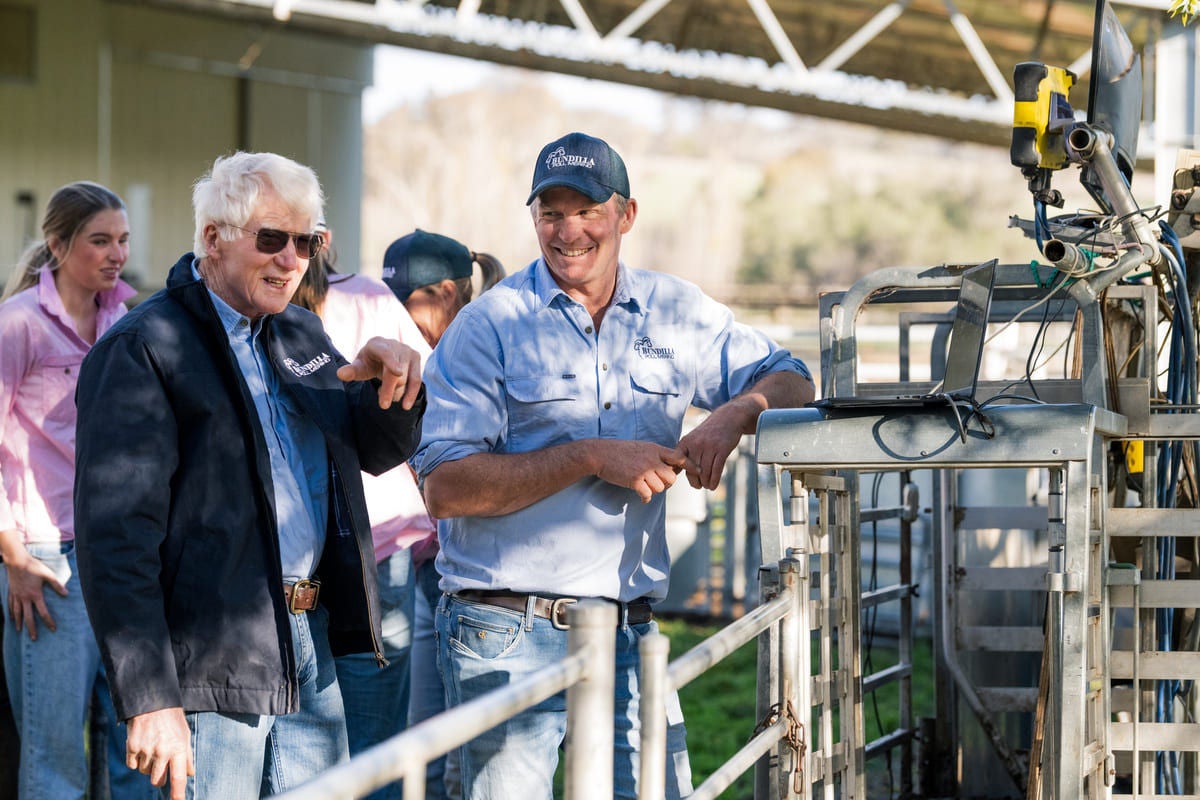
Bundilla Poll Merino Stud is underpinned by a strong family legacy.
With three daughters, Cleo, 20, Lily, 18 and Mimi, 16, all keen contributors during school holidays, whether or not their future is on the farm remains to be seen.
Regardless, Rick and Jill’s concentration on data, and steadfast commitment to improving merino genetics has paved a path across the entire industry, and Rick humbly reflects that the hard work is paying off.
“When you see the gains we’ve been able to make in recent decade, and the success of our clients, it makes everything worth it.”
